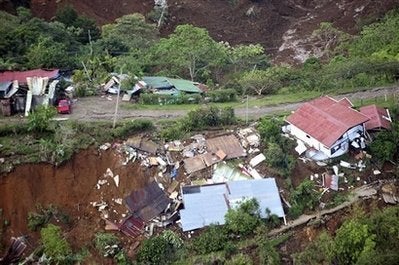
Back in the dark green ages of 1994, I helped launch the first national magazine dedicated to a then burgeoning travel trend called eco-tourism. Short-lived though it was, EcoTraveler focused on environmentally, ecologically and culturally sensitive travel, and I was proud to be a part of it.
Now that style of travel also goes by other names, such as "sustainable" and "ethical."
But 15 years ago, ecotourism was a radical idea. Even those of us who came from and subscribed to the John Muir approach -- "take only pictures, leave only footprints" -- had to admit we expended tons of fossil fuel to fly to remote and pristine corners of the planet, and stayed at hotels that washed their laundry using soaps containing ingredients I didn't even want to know about, discharging waste waters into places I also didn't want to know.
The country that set the bar on what ecotravel meant and how to walk the eco-talk was Costa Rica. One reason was that the country had a lot at stake. It's a living zoological museum, a geographic terrarium. While the country represents only about 0.1 percent of the world's land mass, it contains 5 percent of the world's biodiversity -- it's home sweet home to more than 500,000 species, among the top 20 countries with the highest biodiversity in the world. Now more than 25 percent of Costa Rica is composed of protected forests and reserves. There are 32 national parks, 8 biological reserves, 13 forest reserves, and 51 wildlife refuges.
As I said, it has a lot at stake, as in $take: In 2000, Costa Rica earned about $1.25 billion from ecotourism, and it is estimated that 70 percent of the country's tourists visit natural protected areas.
In February The New York Times sent me to Costa Rica to write a story about real estate developments in the northwest corner of the country that's nicknamed the Gold Coast.
That 60-mile stretch of the Guanacaste Province had been the target of rampant brand-name hotel and residential development that, in the estimation of several peopIe I interviewed, threatened the very nature of what made Costa Rica appealing. Luckily the economic downturn may have inadvertently been an environmental saving grace. Jim Preskitt -- senior vice president of Peninsula Papagayo, a 2,300-acre luxury development anchored by a Four Seasons Hotel with its own collection of homes and lots for sale, the destination club Exclusive Resorts and a 180-slip marina that opened in December -- underscored that idea, pointing to a hillside across Culebra Bay from his executive offices. The forested hill dropped into the white-sand beaches of villages named Panama, Hermosa and Coco.
"That hill would have been dotted with a Rosewood, a Miraval and a One & Only hotel. But all those projects are stalled," he said. "Though we welcome the competition and the regional buzz, this slowdown may be nature's way of saying, 'Protect what you have.'" From where he stood, literally and figuratively, it struck me as a bold and courageous thing to say.
While overall the country still scores high green points Ethical Traveler, an organization dedicated to educate travelers about the social and environmental impacts of travel, recently recognized Costa Rica as one of the top 10 ethical destinations for 2008 -- I found that all that glitters is not necessarily green. For example, one of the country's most famous beaches, Tamarindo, featured in the 1994 film Endless Summer 2, the sequel to 1966's landmark "Endless Summer," last year had been stripped if its Ecological Blue Flag, a distinction granted by Costa Rica's water and sewage utility to beaches with excellent or very high sanitation and cleanliness. It was one of eight beaches that lost such certification. Tamarindo has since regained the blue flag.
Next week I return to Costa Rica, partly because I fell in love with the country, partly because I fell in love with its gentle people (and am falling for one particular sweet Tica, as the locals are called). Back in February, while I interviewed real estate developers and realtors, I jealously watched tourists leave for zip-line tours over canopied rainforests, nature hikes, spas and beach experiences. This time my Tica friend Veronica and I will indulge in some of that cool stuff, while I offer a green report card on Costa Rica, honest and personal reportage on how well this Central American country lives up to its claim as eco-tourism capital of the world.
If you have been to Costa Rica, you will understand why this is critical. If you have not been, but are simply a concerned custodian of the planet, you will also understand. In either case, I welcome you to join me here at HuffPo, with your comments and own experiences -- in Costa Rica, or anywhere that flies its eco flag. Pack your bags, bring your camera. We will leave only foot -- and blog -- prints behind.